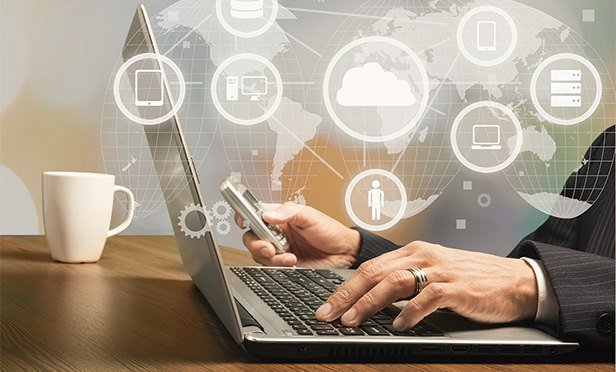 In the past four years, large customers have increased their app usage by 68 percent. (Image: Shutterstock)
In the past four years, large customers have increased their app usage by 68 percent. (Image: Shutterstock)
More employers are putting HR tools in the hands of their workers – literally.
Okta's fifth annual Business @ Work report lists the most popular workplace mobile apps and the fastest-growing apps that employers make available to their workers, based on analysis of its network of more than 5,500 integrations with cloud, mobile and web apps and IT infrastructure providers.
Three of the most popular apps are HR tools, including Workday, ranked second, and SAP SuccessFactors ranked eighth, according to the report. These HR systems, as well as Namely, and BambooHR, are being used “as the source of truth” for employee records.
Related: HR tech vendors: Balancing act between brokers and employers
“This eliminates manual, inefficient processes, which are typically error-prone and require ongoing back-and-forth between HR and IT,” the authors write. “New employees are only given access to relevant apps, and HR can instantly deactivate all access to corporate accounts (including native mobile apps) for exiting employees.”
 Larger companies in particular are deploying more workplace apps of all types, and those who work with Okta have increased their number of deployed apps by 68 percent over the past four year.
Larger companies in particular are deploying more workplace apps of all types, and those who work with Okta have increased their number of deployed apps by 68 percent over the past four year.
Workers at smaller companies would also prefer to perform many HR-related tasks themselves, but many small employers still don't provide them with DIY tools, according to Paychex's report within its, “At Your Convenience: Employee Self-Service Streamlines HR, Saves Money, Engages Staff.”
Paychex surveyed 404 U.S. workers working in organizations with less than 1,000 employees, and found that the majority (73 percent) want self-service HR tools to complete some tasks independently. However, a separate poll of 257 small business employers found that more than half (53 percent) don't currently offer their workforce any level of employee self-service.
The top five tasks workers would rather do independently versus contacting HR are updating personal information; managing paid time off; downloading and viewing payroll information; reporting time worked or clocking in and out; and viewing their work schedule.
Additionally, on average, 80 percent would prefer to accomplish these tasks online via desktop or mobile device rather than submitting a paper form to HR.
Employers can also leverage digital devices to deliver customized messages about benefits to their workers, writes HRDive contributor Kevin Andrews, president and CTO of Hodges-Mace LLC, an employee benefits technology and communications firm.
“Mobile has given HR a way to more effectively communicate with employees,” Andrews writes. “It has also given HR a more personalized messaging platform that can be tied to data analytics. A true mobile strategy can allow HR to aggregate information to employees thus simplifying the complexity of benefit programs.”
Read more:
© 2025 ALM Global, LLC, All Rights Reserved. Request academic re-use from www.copyright.com. All other uses, submit a request to [email protected]. For more information visit Asset & Logo Licensing.








